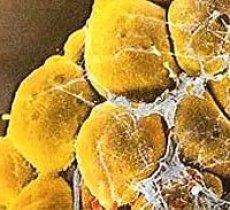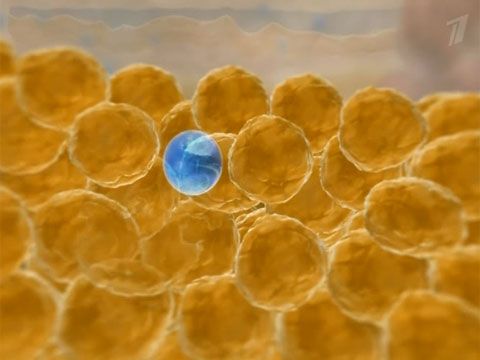New publications
A new type of adipose tissue has been described
Last reviewed: 01.07.2025

All iLive content is medically reviewed or fact checked to ensure as much factual accuracy as possible.
We have strict sourcing guidelines and only link to reputable media sites, academic research institutions and, whenever possible, medically peer reviewed studies. Note that the numbers in parentheses ([1], [2], etc.) are clickable links to these studies.
If you feel that any of our content is inaccurate, out-of-date, or otherwise questionable, please select it and press Ctrl + Enter.

A new type of adipose tissue, beige fat, has been described. Its cells are similar to brown fat cells and also burn excess lipids to produce heat, but differ in a set of significant biochemical and genetic features.
There are two types of adipose tissue - white and brown. White fat accumulates lipids, brown fat burns them and produces heat. Not long ago, it was believed that only animals and babies have brown fat, and adults do not have it. Then it was found in adults, and in connection with this, the idea arose that brown fat could be used as a means against obesity: fat-burning brown cells could reduce fat deposits in white cells.
Researchers from the Dana-Farber Cancer Institute (USA) have added a third fat to these two, which they call “beige” (or “light brown”). Scientists first came across this type of fat tissue in 2008. In their new article in the journal Cell, they explain that beige fat is a completely independent type, not a type of brown fat, but, like brown fat, it burns lipid reserves that accumulate in white adipocytes. In adults, beige fat forms small subcutaneous accumulations near the collarbones and along the spine.

In fact, researchers believe that the brown fat they discovered in adults is not actually brown, but beige. Although it’s easy to confuse the two, there are some very important differences between the two types of fat cells. Brown cells maintain a constant, high level of a protein called UCP1, which is needed for mitochondria to efficiently metabolize fat and produce heat. Beige cells have low levels of this protein, even though they also contain a lot of mitochondria. But certain factors, such as cold, can increase UCP1 synthesis in beige fat. Beige cells can also be stimulated by a hormone called irisin (which has been in the news recently, albeit in connection with brown fat).
Brown and beige fats also differ in origin. Brown cells emerge from stem cells that they and muscle cells share. Beige cells have their own precursor cells, and they form in white fat deposits. Beige fat can burn lipids almost as efficiently as brown fat. So if adult brown fat really is fake, researchers should just forget about it and focus on beige, which can also be used to regulate metabolism and prevent obesity.
However, it is possible that real brown fat is hidden somewhere in a person: it is very difficult to imagine that scientists have ignored its differences from real, animal brown fat for so long.

 [
[